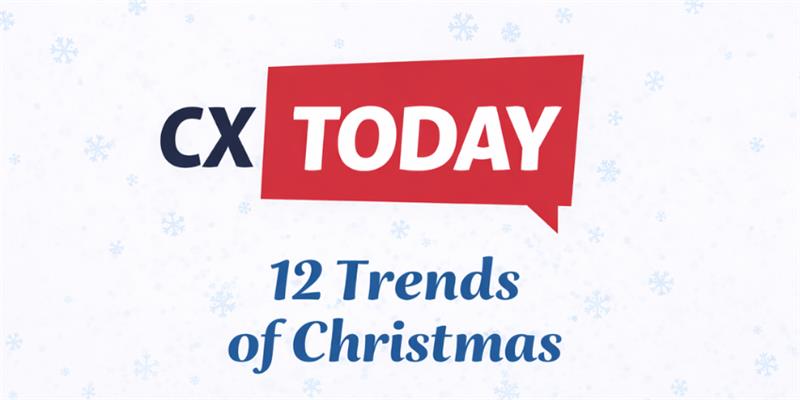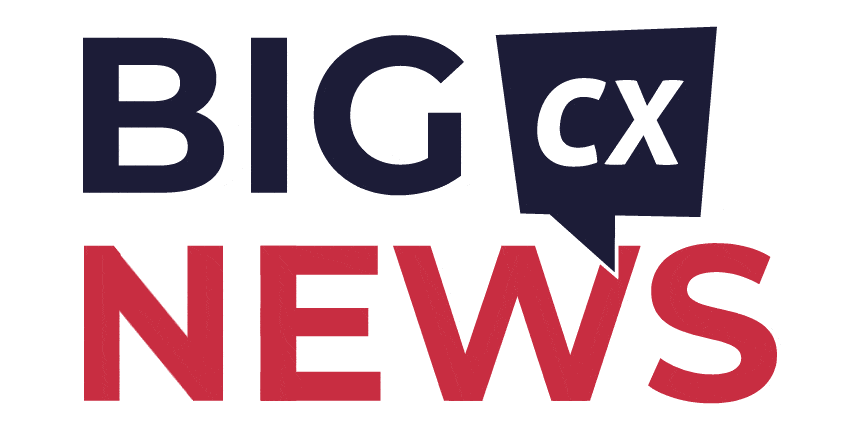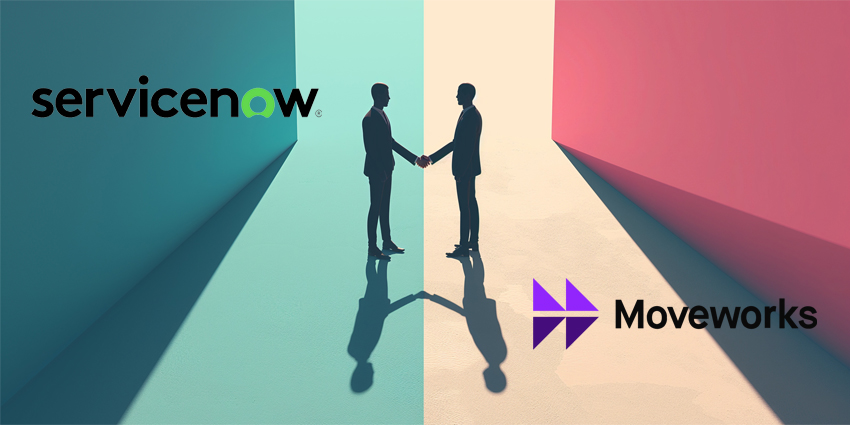Embedded revenue intelligence, collaboration solutions, and – of course – AI agents are just some of the trends sweeping the sales space.
As these trends explode, pinpointing technology providers that will lead sales and the broader CX function into the future is a crucial mission that many enterprises are embarking on.
Analyst tools like the Gartner Magic Quadrant for Sales Force Automation Platforms aim to serve these enterprises, and the 2025 edition spotlighted three market Leaders.
As in 2024, the Leaders are: Salesforce, Microsoft, and Oracle.
Interestingly, the entire matrix looks similar to the previous year’s version, as the CRM space takes a collective breath and waits for the transformative impact of agentic AI.
That said, there is one mover this year, with SugarCRM falling from the Challenger group into the Niche Player quadrant.
Also, there’s one new entrant: Monday.com, which enters in the bottom-left square. Meanwhile, Freshworks has dropped from that square and off the matrix altogether.
ServiceNow is the most noticeable continued absentee, with its Sales and Order Management solution surprisingly missing the cut.
The Definition of a Sales Force Automation (SFA) Platform
A Sales Force Automation (SFA) platform typically sits within a CRM system that centralizes a sales team’s data – alongside data from other customer-facing functions – into a customer profile.
The SFA then takes that data and adds adjacent tooling to assist sales reps and automate several of their tasks.
As the years have rolled by, SFA solutions have swelled with new features. Yet, the fundamentals remain the same, with capabilities covering account, activity, contact, forecast, opportunity, and pipeline management.
Beyond that, there are tools for analytics, proposals and quotes, partner relationship management, and more that Gartner considers “mandatory” in its report.
Others becoming more common include: revenue intelligence and enablement solutions, digital sales rooms, and configure, price, quote (CPQ) applications.
After going through these capabilities and the many others, Gartner grouped 13 of the most prominent SFA providers into four camps: Leaders, Challengers, Visionaries, and Niche Players. Here’s how they performed.
Gartner Magic Quadrant Leaders
Leaders in the Magic Quadrant demonstrate a compelling vision for the SFA category’s future, a complete product, an above-average customer experience, and strong earnings. This year’s market Leaders are:
- Salesforce
- Microsoft
- Oracle
Salesforce
Salesforce Sales Cloud continues to lead the SFA space. Why? Per Gartner, its “strategic focus on agentic AI” is now a chief reason, with Agentforce for Sales now available to its SFA install base.
Notably, that includes a personalized Sales Coach that supports reps in advancing deals “effectively”.
Yet, Gartner also cites Sales Cloud’s “robust customization and extensibility” as another core strength, alongside its “enhanced account and contact research” features.
Since Gartner conducted its research, Salesforce has made two big moves to bolster its SFA: embedding Slack channels and acquiring Bluebirds.
The former helps Salesforce step towards a more collaborative CRM ecosystem, while the latter empowers Salesforce with an AI agent that automates prospecting.
Microsoft
Microsoft Dynamics 365 Sales benefits significantly from its broad ecosystem, converging CRM solutions with ERP and broader enterprise technologies.
Yet, the Microsoft Teams chat panel now available within the SFA caught the eye of Gartner’s team, enabling employees across the enterprise to collaborate on customer cases.
The platform also benefits from integrated Microsoft Power BI technology, enabling deeper conversational intelligence capabilities than most competitive offerings.
Gartner picked up on this and noted the native Copilot as another strength, which allows users to build customized workflow automations, dashboards, and views.
However, it didn’t spotlight the AI agents Microsoft has added to the platform, which can perform tasks like customer outreach, surfacing at-risk deals, and more.
Oracle
Oracle may not market its SFA platform with the gusto of Salesforce or Microsoft, yet its offering has many advantages, especially for those already partnering with Big Red on ERP.
Gartner picks up on its “account and contact management capabilities”, with unique tools for maintaining and enriching sales data.
The analyst also heaps praise on its “visualization and analytics” and “mobile” features, with the latter especially well-suited to sales teams that are constantly on the move.
The CX Awards 2025 judges recognized some of these features when giving Oracle the nod for “Best CRM Solution.”
Additionally, they underscored how the tech giant is integrating AI into Oracle Sales and its other Fusion apps to deliver added value without raising costs. Instead, it just comes part and parcel.
Gartner Magic Quadrant Challengers
Challengers in the Magic Quadrant are typically larger than Niche Players, matching an impressive new flow of business with an excellent understanding of the current market. Yet, their longer-term vision may not resonate with top sales execs and IT leaders, with the latter coming increasingly to the fore in CX buying decisions. This year’s Challengers are:
- SAP
- Pegasystems
SAP
Like Oracle (and Zoho), SAP can enable advanced sales automations and data workflows by pulling CRM and ERP systems onto the same platform.
Surprisingly, Gartner doesn’t highlight this as a strength. However, it does commend SAP for establishing a workspace for admins to collaborate on cases, KPIs, and more.
Moreover, the analyst lauds SAP’s “guided selling” tools and “composable and microservice architecture”. That composability is key, as when sales teams add niche tools to SAP Sales Cloud, businesses can establish a common data foundation.
As AI agents come into the fray, that data foundation may prove invaluable.
Nevertheless, SAP misses out on the Leader quadrant, with SAP citing its “reliance on add-ons and integrations” to deliver an enterprise-grade SFA platform.
Pegasystems
Pegasystems has long envisioned the “autonomous enterprise”, operating at the intersection of CRM, workflow automation, and low-code technologies.
As such, it appears well-positioned for the AI agent era, showing impressive thought-leadership when announcing an industry-first agent orchestrator in February 2024.
Gartner does not highlight this in its report. However, it does applaud Pega for its “opportunity-guided selling” and “partner relationship management” features.
Additionally, it gives Pega plaudits for its “visualization and analytics” strategy, where it develops engaging narrative summaries that tell stories and inspire action.
It does, however, lack the collaboration tooling of market leaders, and Gartner also cites limitations in its forecasting capabilities.
Gartner Magic Quadrant Visionaries
Visionaries in the Magic Quadrant can compete with market leaders in their product, pricing, and innovation models, demonstrating an excellent understanding of market trends. However, they cannot yet exhibit the execution streak of “top-right vendors”. This year’s Visionaries are:
- Zoho
- Creatio
Zoho
Zoho continues to expand across the enterprise, building payroll, HR, and various other solutions, all within one self-owned architecture. That enables it to deliver end-to-end workflows from Zoho CRM and beyond. It also allows it to effectively limit costs.
While Gartner didn’t spotlight this, it lauded Zoho for its “comprehensive partner ecosystem management”, which is another significant strength.
The analyst also pinpointed its “AI-powered account and contact intelligence” and “AI-enhanced visualization and analytics” capabilities as major plus points.
These pluses underscore Zoho’s evolving AI story, with the vendor making unique moves, such as building and customizing its own LLM, which may support its long-term ambitions to mitigate cost.
Nevertheless, there are feature gaps in Zoho’s SFA product, with Gartner citing its “basic AI-guided selling” as a caution for buyers.
Creatio
Creatio competes with the big players in CRM thanks largely to its no-code experience, enabling users to design and configure CRM workflows without any technical skills. Indeed, no low-code shortcuts or coding required.
Unsurprisingly, Gartner underscored this differentiator alongside the vendor’s ongoing “viability” and “embedded no-cost AI features”. Those include data analysis, workflow creation, and content generation, per the analyst.
Another strength that Gartner didn’t highlight is Creatio’s approach to flexible implementations, with public, private, and on-premise options. That’s paired with a promise for “rapid” deployments.
Nevertheless, the Magic Quadrant lists the need for “manual configuration in generative AI” and its “less mature” ISV (independent software vendor) ecosystem amongst its cautions.
Gartner Magic Quadrant Niche Players
Niche Players in the Magic Quadrant have gained traction, typically by excelling across specific market segments or particular industries. Yet, across the market, they may lack product depth and/or an established record for execution. This year’s Niche Players are:
- HubSpot
- BUSINESSNEXT
- SugarCRM
- Neocrm
- Vtiger
- com
HubSpot
HubSpot typically markets to SMBs. The Gartner Magic Quadrant targets enterprise buyers. That disconnect may have hampered its performance.
Nevertheless, HubSpot does have some enterprise customers, and Gartner praised the Breeze AI layer that runs across the Sales Hub and the vendor’s broader CRM ecosystem. That’s supported by a context layer, established after the 2024 acquisition of Frame.ai.
Gartner also isolated HubSpot’s “activity management” and “visualization and analytics” solutions as core strengths.
However, listed among its cautions are its “static” opportunity-guided selling capabilities and predictive AI features.
BUSINESSNEXT
BUSINESSNEXT offers a suite of enterprise platforms typically geared towards the financial services and insurance sector. That has allowed it to establish a strong presence in the sector.
However, its platform expands beyond and includes several notable new features. Number one is its “mobile functionality”, per Gartner, with its smartphone app including advanced voice data entry functionality and AI-enhanced notifications.
The analyst also spotlights strengths in its “account and contact management” tech and industry AI models, which expand into pharma and retail, alongside finance.
Yet, “less developed” pipeline and forecasting management tools and sometimes complicated workflow configurations are listed as concerns within the report.
SugarCRM
Despite dropping into the Niche Player category, SugarCRM has added to its revenue intelligence functionality by integrating capabilities from its May 2024 acquisition of sales-i.
That strength has boosted its appeal in key verticals that prioritize revenue over lead-gen, such as manufacturing, distribution, and related industries.
Nevertheless, Gartner warns that it may have over-rotated on this strategy and has risked alienating its longstanding, diverse customer base.
It did, however, note strengths in “lead and account intelligence”, “opportunity summarization and alerts”, and its “extensible platform with industry-specific accelerators”.
Neocrm
While it’s a smaller name in North American and European space, Neocrm serves many large enterprises throughout Asia and the Pacific.
Its AI capabilities are a deal-winner, with Gartner noting how they offer a “competitive performance” against even the biggest-named vendors in the report.
Meanwhile, the analyst commends Neocrm’s activity management and customer collaboration tools.
However, although its AI may compete, Gartner notes “AI module pricing and complexity”, alongside its limited geographic scope, as two cautions.
Vtiger
Like HubSpot, Vtiger primarily targets the midmarket, which may have hindered its standing in this enterprise-focused report, reminding readers that they mustn’t take the Magic Quadrant matrix at face value.
That said, Vtiger does earn kudos from Gartner for its account, activity, and contact management features, include the ability for Vtiger One users to establish hierarchies within the sales team. “Partner enablement” is another strength.
However, the report cautions of the vendor’s narrow “vertical products”, alongside its limited “forecasting” and “proposal and quoting” tools.
monday.com
In August 2022, Monday.com launched a sales CRM, again most relevant to SMBs. Since then, it has expanded into monday CRM and quickly established a global footprint.
Pushing this fast growth is its customizable, no-code UI. Gartner rubberstamps this and applauds monday.com for its “ease of management” and “collaboration and sharing capabilities”.
Nevertheless, its “limited AI and ML (machine learning) depth” and reliance on manual data entry are among the cautions obstructing its charge further into the SFA space.
Unpack more CX Today rundowns of adjacent Gartner Magic Quadrant reports below:
- Gartner Magic Quadrant for CRM Customer Engagement Center (CEC) 2024
- Gartner Magic Quadrant for Customer Data Platforms (CDPs) 2025
- Gartner Magic Quadrant for Content Marketing Platforms (CMPs) 2025







